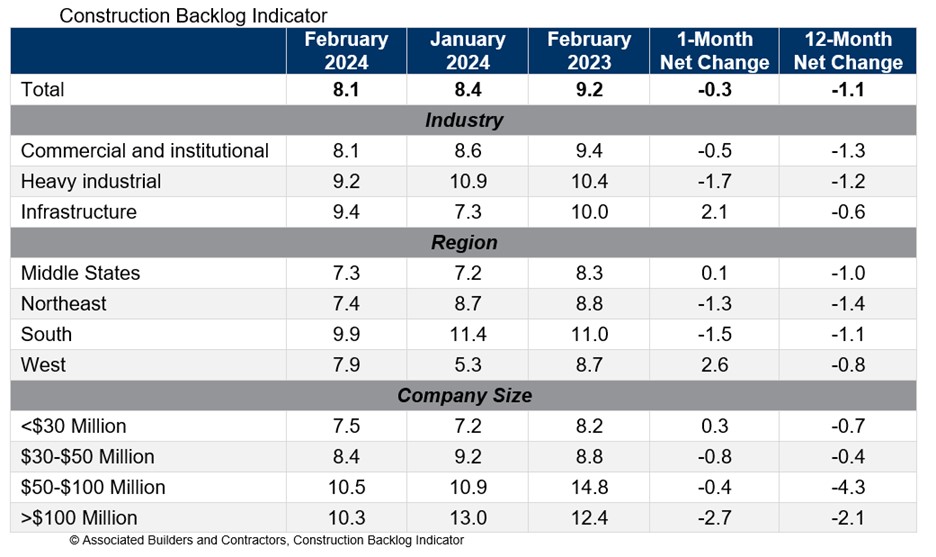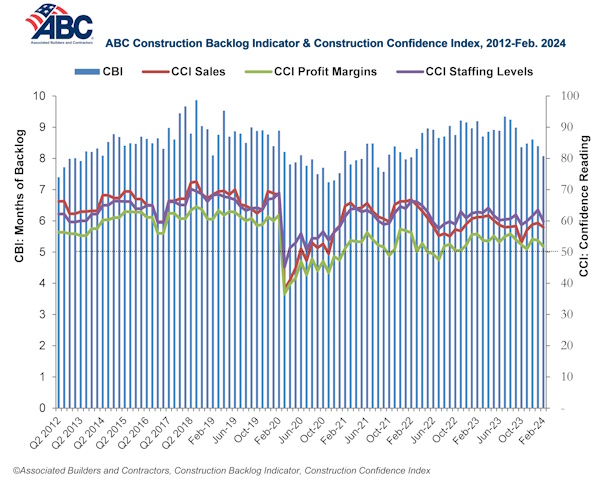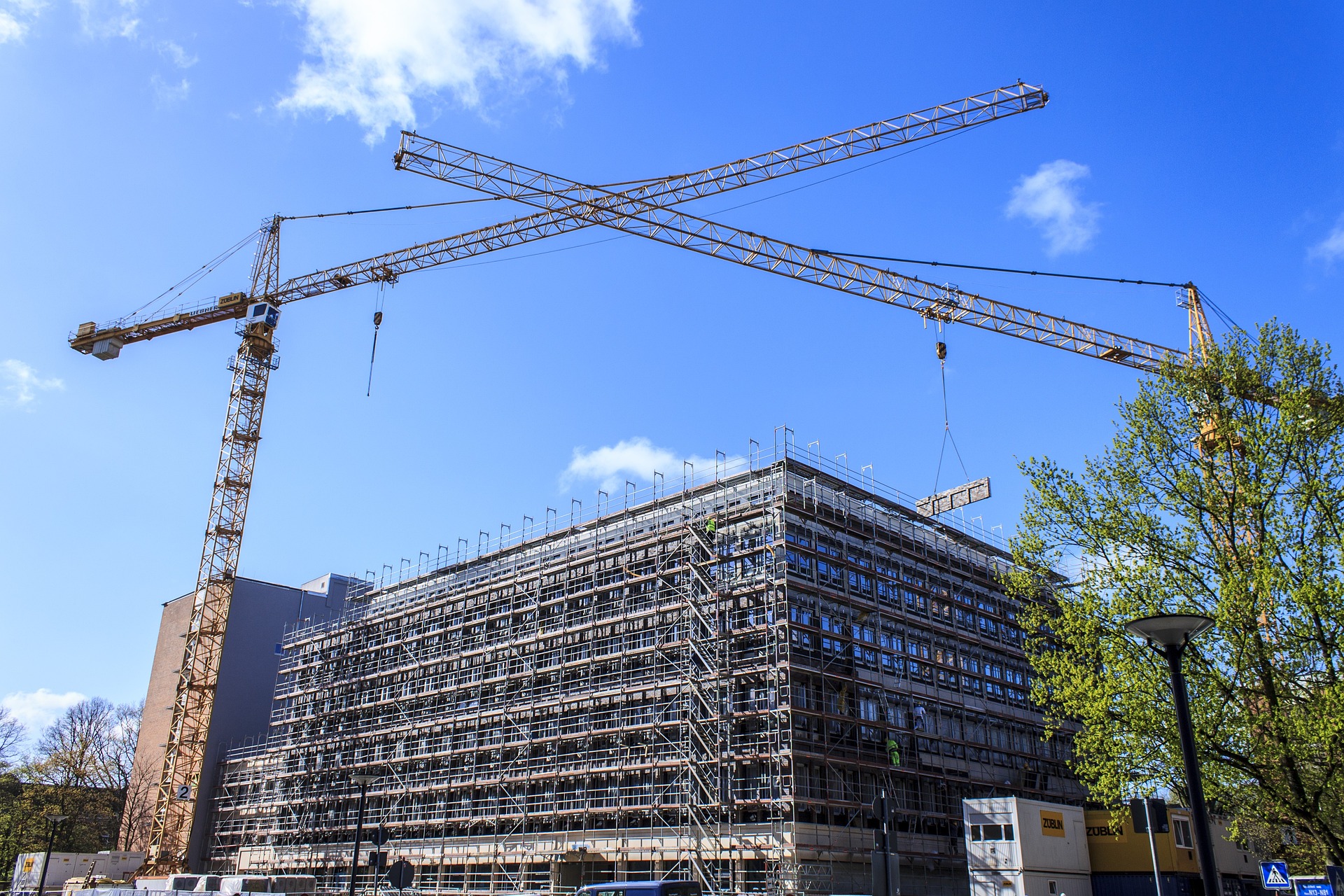Associated Builders and Contractors reported that its Construction Backlog Indicator declined to 8.1 months in February, according to an ABC member survey conducted Feb. 20 to March 5. The reading is down 1.1 months from February 2023.
Backlog fell for every size of contractor except for those with under $30 million in annual revenues in February. Over the past year, however, the largest contractors—those with greater than $50 million in revenues—have experienced the greatest decline in backlog.
ABC’s Construction Confidence Index readings for sales, profit margins and staffing levels also decreased in February. However, all three readings remain above the threshold of 50, indicating expectations for growth over the next six months.
“Backlog is declining and confidence began to fade modestly in February,” said ABC Chief Economist Anirban Basu. “While it is far too early to predict an industrywide downturn given that confidence readings continue to signal growth along sales, employment and profit margin dimensions, it appears that a rising tide of project cancellations and postponements has begun to make its mark.
“With excess inflation remaining stubbornly durable, at least according to certain measures, interest rates are poised to remain higher for longer,” said Basu. “That gives higher borrowing costs more time to upset the economic momentum that has so surprised economists over the past two years and has provided support for various nonresidential construction activities. With so much federal money still entering the economy, there will continue to be support for growth in certain construction segments, including public works and manufacturing-related megaprojects, but industry weakness is more apparent in segments that rely more purely on private financing.”



Related Stories
| Nov 15, 2013
Metal makes its mark on interior spaces
Beyond its long-standing role as a preferred material for a building’s structure and roof, metal is making its mark on interior spaces as well.
| Nov 13, 2013
Government work keeps green AEC firms busy
With the economy picking up, many stalled government contracts are reaching completion and earning their green credentials.
| Nov 13, 2013
First look: Renzo Piano's addition to Louis Kahn's Kimbell Art Museum [slideshow]
The $135 million, 101,130-sf colonnaded pavilion by the famed architect opens later this month.
| Nov 11, 2013
4 trends driving the recovering commercial construction sector
Jones Lang LaSalle research reveals a four-point “new look” for the post-recession construction industry.
| Nov 8, 2013
Oversized healthcare: How did we get here and how do we right-size?
Healthcare facilities, especially our nation's hospitals, have steadily become larger over the past couple of decades. The growth has occurred despite stabilization, and in some markets, a decline in inpatient utilization.
| Nov 8, 2013
Can Big Data help building owners slash op-ex budgets?
Real estate services giant Jones Lang LaSalle set out to answer these questions when it partnered with Pacific Controls to develop IntelliCommand, a 24/7 real-time remote monitoring and control service for its commercial real estate owner clients.
| Nov 8, 2013
S+T buildings embrace 'no excuses' approach to green labs
Some science-design experts once believed high levels of sustainability would be possible only for low-intensity labs in temperate zones. But recent projects prove otherwise.
| Nov 8, 2013
Net-zero bellwether demonstrates extreme green, multifamily style
The 10-unit zHome in Issaquah Highlands, Wash., is the nation’s first net-zero multifamily project, as certified this year by the International Living Future Institute.
| Nov 8, 2013
Walkable solar pavement debuts at George Washington University
George Washington University worked with supplier Onyx Solar to design and install 100 sf of walkable solar pavement at its Virginia Science and Technology Campus in Ashburn, Va.
| Nov 6, 2013
PECI tests New Buildings Institute’s plug load energy use metrics at HQ
Earlier this year, PECI used the NBI metrics to assess plug load energy use at PECI headquarters in downtown Portland, Ore. The study, which informed an energy-saving campaign, resulted in an 18 percent kWh reduction of PECI’s plug load.

















